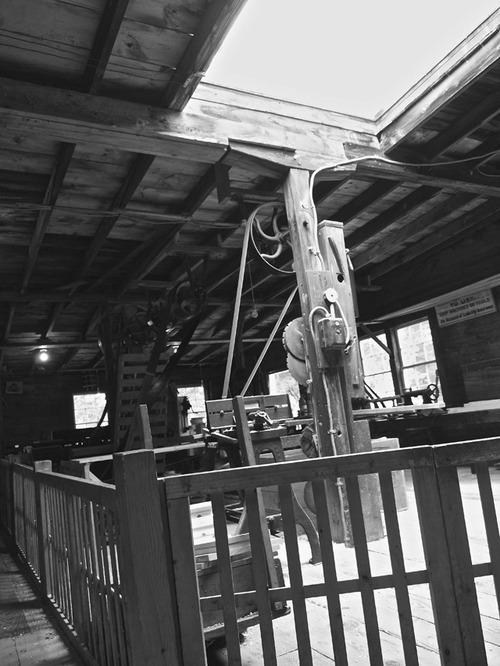An 1859 lithograph depicted work with sewing machine
[Rodney P.Carlisle, Handbook to Life in America, Volume 2; New York, Infobase publishing, 2009, 129]
Before the invention of gas light, the location of working space is usually dominated by surrounded natural environment. Like 1859 lithograph, natural light was most important element of work environment. Because of insufficient artificial lights, tables or desks for working always are located next to the window which can provide abundant sunlights and ventilation. Not only house where woman enjoy sewing, but also most factories or mills got the same situation.
After the industrialization, however, this common sense got a big change. Work flow which had affected by nature in the form of the season and sunlight was regulated by shifts, schedule, and bells.1 On the other hand, mills has a little bit different story. Even though mills also was regulated by the location of machinery and work flow, natural landscape still dominated work environment because of its water-powered system. Along with its systems, windows and openings were made for providing natural light and ventilation.

skylight in Hanford mills pictures by wpkeem
Hanford mills in NY is the great example of choreography of light, machinary, structure and landscape. To improve work environment, machine tables are usually engaged in openings. Mostly its openings exist to get an abundant sunlight though, some of openings are also engaged in ventilation and movement of workers. Even though most of openings and window was planned at the mills as a rationalized way of efficiency, It surprisingly created various light spectrum.
the location of Hanford Mills from Bing Maps with sun direction : edited by wpkeem
The location of buildings was planned followed by the stream which can make waterpowered machinary works. Because of that, building was set the axis from North east to south west. For these reasons, windows always get a plenty of sunlight which can provide a comfortable work environment. The size of windows or openings and its location was dominated by setting of machinary and automatically created unique pattern of windows. If we can explore more deeply about the openings such as height, location, and shape, perhaps we can find unique pattern of light along with its mechanical system. If we are able to reach that far, we can create a kind of chreography of light made by machinary in the mills and possibly create domestic light pattern of barns or mills which can transplant to the modern building.
[ 1 Rodney P.Carlisle, Handbook to Life in America, Volume 2; New York, Infobase publishing, 2009, 129]


4 Comments